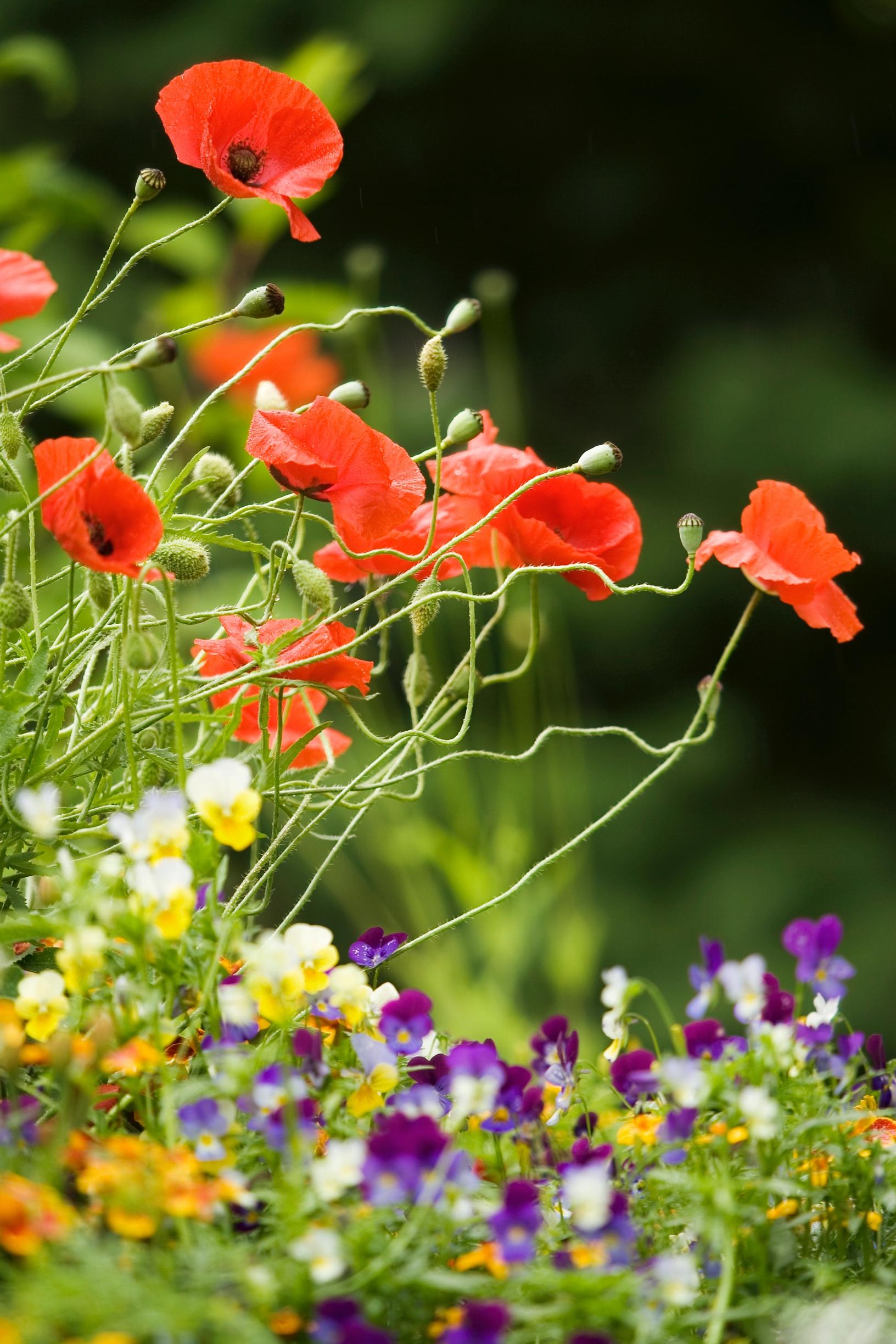
Poppies are a splash of color in the garden! Learn about the most beautiful varieties and growing and caring for them
Poppies have gained great popularity among garden enthusiasts—and no wonder! The silky flowers of these beauties bloom in July–August and come in a wide range of colors, including yellow, orange, purple, white, and various shades of red. For those growing poppies outdoors, these vibrant blooms make a stunning display.
Annual poppies (Papaver) are fast-growing and beautiful summer flowers that can be grown in flower beds, rock gardens, and wildflower meadows. Poppies are also often seen at the edges of fields and wastelands as escapees from cultivation. They are a fantastic option if you’re wondering how to grow poppies from seed, as they establish quickly.
The dried and fresh seed pods of poppies are decorative and therefore popular in floral arrangements and dried flower compositions. Poppies are also used as cut flowers, picked while still in bud. Poppy seeds are used as decoration on bread rolls, as a spice, and in baking. They are also a favorite for those caring for annual poppies at home due to their versatility.
Brightly colored poppies attract important pollinators, such as butterflies and bees, to the garden. The height of the plants varies from 20 centimeters to a meter, depending on the species and variety. The nutrient content of the soil also affects the size of the plant.
Growing poppies: here’s how to succeed
Growing annual poppies by sowing is very easy. The same summer you’ve sown them, you’ll get to admire your own colorful display of poppies. Once you’ve sown poppies, you’ll get to enjoy their floral splendor in the following years as well. Follow these poppy planting tips to ensure a spectacular show.
Sowing poppies: poppy planting tips
You should sow poppy seeds immediately after the snow melts in April–May. Sprinkle them directly onto the moist soil surface at the planting site. Sow the seeds sparsely and do not cover them. Make sure to keep the sowing area moist until the seedlings emerge. Thin out the seedlings if necessary.
The small seeds are easier to sow when you first mix them with sand.
If you sow different poppy species in batches throughout the spring, you can enjoy a longer flowering period. You can also sow poppies in the fall, and they will bloom the following spring.
Annual poppies readily self-seed and thus spread in the garden. Due to cross-pollination, the seedlings may look different from their parents.
Soil requirements
The soil that poppies are grown in should be well-draining, as the plants do not tolerate waterlogged roots. A suitable pH is 6–8. Well-drained soil with a pH between 6–8 is considered the best soil for poppy flowers to thrive.
Light requirements
Choose the sunniest possible growing site for your poppies in order to get the most abundant flowering out of them. Poppies tolerate even strong sunlight well. Caring for annual poppies is simpler when they receive plenty of sunlight.
Watering
Water only when necessary and allow the soil to dry out between waterings. Water should never stand at the roots of the poppies, as they are prone to rot. When learning how to grow poppies from seed, avoid overwatering.
Fertilization
Poppies do not need heavy fertilization. Soil that is too rich in nutrients will cause poppies to grow leaves and overly long stems instead of flowers. If you fertilize the poppy bed, use fertilizer intended for flowering plants but apply less than the recommended amount.
Supporting
Usually, poppies do not need support, but the tallest species may sometimes topple over if not supported by neighboring plants. You can use plant supports to bolster a tall poppy group.
5 magnificent annual poppies
Ladybird poppy

The ‘Ladybird’ poppy is a low-growing variety. The pattern on its flowers resembles a ladybug.
Common poppy

Vibrant bright red, single flowers. Numerous varieties, including:
- ‘Pandora’: Multi-toned, semi-double burgundy flowers with light pink stripes.
- ‘Mother of Pearl’: A mix of light pastel shades and delicately striped flowers.
- ‘Bridal Silk’: Pure white single flowers.
- ‘Falling in Love’: A mix of soft shades of red, white, and pink.
Long-headed poppy

A delicate, small species with bright salmon-colored, single flowers that thrives in various growing conditions.
Opium poppy

This species displays a wide range of flower colors and forms, from single to double blooms. The leaves are bluish-gray.
‘The Giant’ is a very large variety. Its large seed pod is decorative even when dried.
The peony poppy is a double-flowered variety of opium poppy. It often reverts to single-flowered forms when grown in the garden.
Tulip poppy

The inner petals of the tulip poppy are upright and resemble a tulip. The flowers can be up to 10 cm in diameter.


